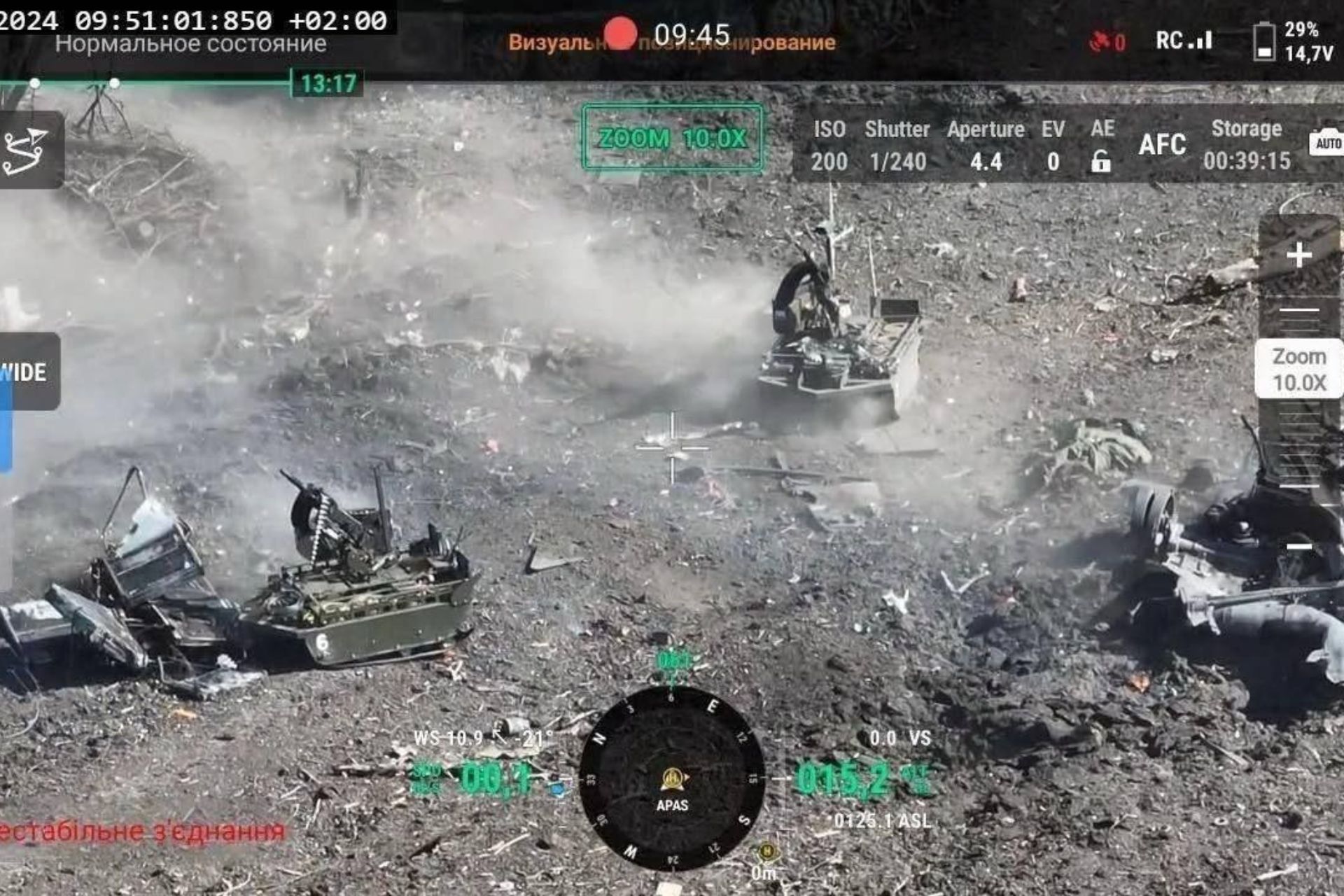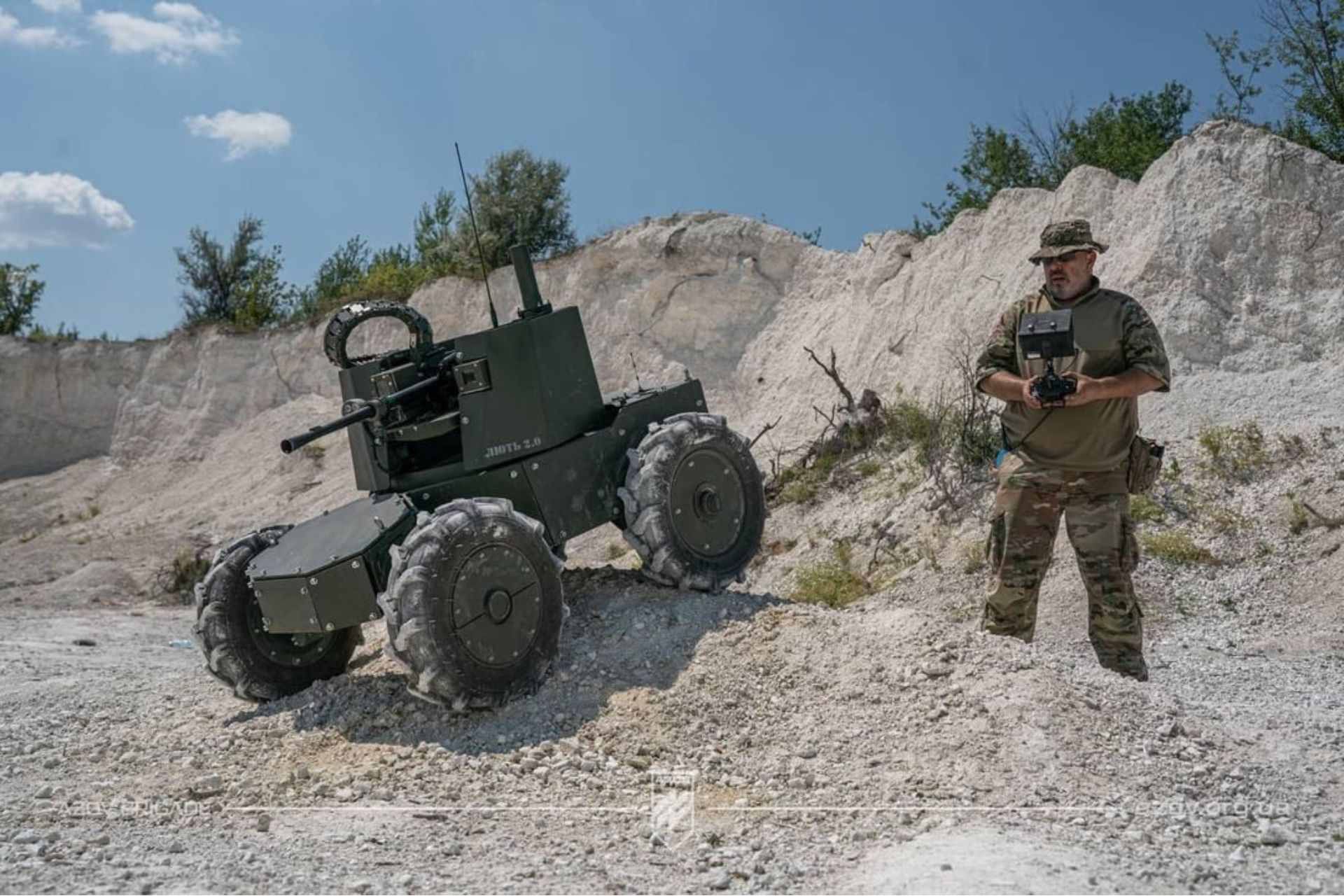Breaking News
Focus: Ground Drones at Heart of Ukraine’s Battles Between Tactical Innovations and Combat Realities.
The war in Ukraine, a catalyst for significant military modernization, has seen the increased deployment of ground drones. These unmanned vehicles, whether armed or designed for logistical support, mark a transformative shift in the conduct of modern warfare. For both Ukraine and Russia, these technologies introduce new tactical capabilities while posing critical challenges on the battlefield. This article examines the models used, their capabilities, effectiveness, challenges, and future prospects in the evolving conflict.

Ukrainian FPV drones have been observed destroying Russian combat unmanned ground vehicles (UGVs) in eastern Ukraine (Picture source: Telegram Channel Xronikabpla )
Russia and Ukraine, although pursuing different technological paths, have both embraced robotic systems to address the demands of an increasingly transparent and lethal battlefield. In Ukraine, platforms such as the Lyut, MOROZ, and Ironclad exemplify the pursuit of qualitative superiority, while Russia relies on models like the Uran-9 and prototypes such as the Marker to address structural and tactical shortcomings exposed in ongoing combat.
Ukraine has integrated ground robots into its operations through its Brave1 program, designed to develop and test domestic military technologies. Ukrainian ground drones stand out for their versatility and relatively affordable costs. For example, the Lyut, a mini-tank armed with a PKT 7.62 mm machine gun, is used for diversionary maneuvers and reconnaissance. Its robust performance in adverse conditions highlights its reliability after undergoing over 30 field trials.
The MOROZ plays a pivotal role in assaults and defensive positions, boasting 48 hours of operational autonomy and a thermal imaging camera that supports day and night operations. The Ironclad, equipped with the Shablya M2 turret, showcases Ukraine’s advancements in armed robots, capable of supporting frontline units while operating remotely to minimize human risk.
Additionally, new platforms like the TerMIT, recently delivered in large numbers to mechanized brigades, provide capabilities for logistical transport, casualty evacuation, and mine deployment. With the ability to carry up to 300 kg across rough terrain, the TerMIT underscores Ukraine’s focus on optimizing resources to address diverse tactical requirements.
Russia, on the other hand, employs a broader range of ground drones, although they often face criticism for limited effectiveness. The Uran-9, a heavily armed combat vehicle, and the Nerekhta, a reconnaissance and fire-support robot, have been deployed in exercises and limited operations. However, feedback from their use in Syria and Ukraine has revealed significant design flaws, including communication issues and vulnerabilities to countermeasures.

The Lyut a mini-tank armed with a PKT 7.62 mm machine gun, is used for diversionary maneuvers and reconnaissance (Picture source: Ukrainian MoD)
Prototypes such as the Marker, equipped with AI-based autonomous reconnaissance, reflect Russia's efforts to close its technological gap. Yet these systems remain underutilized on the battlefield. Meanwhile, lighter solutions like the Courier and Lyagushka, designed for specific missions such as mine deployment, evacuation, or kamikaze attacks, demonstrate adaptability to tactical realities.
The rise of ground drones has reshaped certain aspects of the war in Ukraine, though not without challenges. Operational successes, such as the Lyut’s use in frontal assaults, highlight the psychological and tactical impact of these machines. However, terrain limitations, risks of electronic jamming, and the difficulty of integrating them into traditional combat formations raise questions about their true effectiveness.
Ground drones also face active and passive countermeasures. Ukrainian forces, for example, use aerial drones to neutralize Russian unmanned ground vehicles (UGVs) before they can achieve their objectives. Furthermore, simple obstacles such as ditches or barbed wire can impede their mobility.
As the war intensifies, both sides are investing in the development of more autonomous and resilient drones. In Ukraine, the emphasis is on flexible, cost-effective systems that can be mass-produced. In Russia, the strategy is evolving to include hybrid solutions that integrate ground and aerial drones. Coordinating these different types of robots could revolutionize military tactics.
However, the implications of these technologies extend beyond Ukraine. The conflict serves as a testing ground for future robotic warfare, shaping global military doctrines. Ethical and strategic considerations, particularly regarding autonomy in the use of lethal force, will remain central to the ongoing debate.
Ground drones in Ukraine are more than tactical tools; they represent the transformative potential of military technology. Their widespread deployment and battlefield performance will provide critical insights for future conflicts while redefining the rules of modern warfare.


























